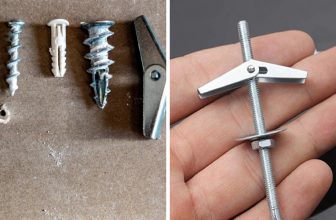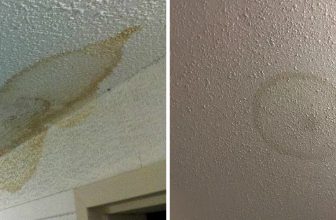How to Cut in Ceiling Paint
Painting your ceiling can greatly enhance the overall look of a room. However, cutting in around the edges and corners can be a daunting task for many individuals. This is where cutting in ceiling paint properly can make a huge difference. One of the main benefits of cutting in ceiling paint is that it allows you to achieve clean and precise lines. This is important because any sloppy edges or overlapping can be very noticeable once the paint dries.
The main advantage of cutting in ceiling paint is that it gives you more control over the painting process. By using a brush instead of a roller, you can easily navigate around light fixtures, vents, and other objects on the ceiling. This allows for better coverage and reduces the risk of accidentally getting paint on areas that should not be painted. In this blog post, You will learn in detail how to cut in ceiling paint.

Step-by-Step Instructions for How to Cut in Ceiling Paint
Step 1: Inspect the Ceiling
Before you start cutting in, make sure you inspect the ceiling for any dirt, grime or stains. Remove any debris with a broom or vacuum cleaner and clean up any stains using vinegar and water solution.
Step 2: Gather Your Supplies
To successfully cut in ceiling paint, you will need a few supplies such as:
- Ladder
- Drop cloth
- Paintbrush
- Paint tray
Step 3: Protect the Room from Paint Splatters
Cover all furniture, flooring and fixtures with drop cloths or plastic sheets. This will protect your space from any unwanted paint splatters. Pour the ceiling paint into a clean paint tray. If necessary, you can thin out the paint with water to make it easier to apply.
Step 4: Dip the Paintbrush
Dip your paintbrush into the paint, making sure to coat it evenly. Tap off any excess paint on the side of the tray. Start at one corner of the ceiling and cut in along the edges using your paintbrush. Work in small sections and make sure to keep a wet edge for a smooth finish.

Step 5: Use the W-technique
For larger spaces, use the W-technique which involves making a series of W strokes with your paintbrush before filling them in with horizontal strokes. To avoid visible lines between sections, blend the edges together by lightly feathering the paint with your brush. This will create a seamless finish.
Step 6: Check for Coverage
After completing one section, step back and check for any missed spots or areas that need more coverage. Touch up as needed before the paint dries. For better visibility, work in natural light if possible. This will help you see any missed spots or uneven coverage.
Step 7: Use a Handheld Mirror
If you are having trouble reaching certain areas, use a handheld mirror to help guide your brush strokes and ensure full coverage. Once you have completed cutting in, allow the paint to dry fully before removing any drop cloths or plastic sheets. This will prevent accidental smudges or smears.
By following these step-by-step instructions, you can easily learn to cut in ceiling paint and achieve a professional-looking finish. Practice makes perfect, so don’t be discouraged if it takes a few tries to get the hang of it.
Precautions for How to Cut in Ceiling Paint
- Ceiling paint is known to contain harmful chemicals that can be dangerous if they are inhaled. To stay protected, make sure you wear a breathing mask while cutting in ceiling paint.
- When using a brush or roller to cut in the ceiling paint, it is important to protect your eyes from any potential splatters or drips. Wear safety goggles to prevent any accidents.
- Before starting the cutting in process, make sure the paint is well mixed and has a smooth consistency. This will ensure an even application and avoid any lumps or streaks.
- It is important to position yourself properly while cutting in ceiling paint. Use a stable ladder that is firmly placed on the ground and avoid overstretching your arms to reach difficult areas.
- If possible, try to have good lighting in the room while cutting in ceiling paint. This will help you see any missed spots or unevenness and allow for a more precise application.
- Keep a wet cloth or rag nearby to clean up any accidental spills or drops of paint. This will prevent the paint from drying on surfaces and causing potential damage or staining.
- After completing the cutting in process, make sure to properly dispose of any used materials and clean up the work area. This will ensure a safe and clean environment for everyone.
By following these precautions, you can successfully cut in ceiling paint without putting yourself at risk. Remember to always prioritize your safety while working with any type of paint.

What Technique Should You Use While Cutting in the Ceiling Paint?
When it comes to painting a room, there are several techniques that can be used to achieve a professional-looking finish. One important step in the process is cutting in the ceiling paint. This refers to painting along the edges of the ceiling where it meets the walls, as well as around light fixtures and other obstacles.
1. Cutting in with a Brush
Using a brush is the most traditional method for cutting in ceiling paint. This technique involves painting along the edges of the ceiling with a brush, following the natural edge where it meets the walls. It requires more precision and control, but can result in clean, crisp lines.
To use this technique, start by loading your brush with paint and removing any excess. Then, hold the brush at a slight angle and carefully paint along the edge of the ceiling, keeping your strokes smooth and consistent. Be sure to overlap slightly onto the wall to ensure full coverage.
2. Cutting in with an Edger Tool
If you’re not confident in your brush skills, or simply want to speed up the process, you can also use an edger tool for cutting in ceiling paint. These tools have a flat surface that allows you to easily glide along the edge of the ceiling without risking any drips or smudges.
To use this technique, load the edger tool with paint and then guide it along the edge of the ceiling. The key is to keep a light touch and let the tool do the work for you. It may take some practice to get comfortable with this method, but once you do, it can be a game changer.
3. Using Painter’s Tape
Another option for cutting in ceiling paint is using painter’s tape. This involves placing tape along the edge of the ceiling where it meets the wall, creating a barrier to prevent any paint from getting on the walls. While this can be effective, it does add an extra step and may not always result in perfectly clean lines.
If you choose to use painter’s tape, make sure to press down firmly on the edges to create a tight seal. Also, be sure to remove the tape while the paint is still wet to avoid any peeling or damage.
How Do You Avoid Getting Paint on the Walls While Cutting in the Ceiling Paint?
When it comes to painting a room, one of the most challenging tasks is cutting in the ceiling paint. Cutting in refers to the process of painting along edges such as corners, ceilings and baseboards using a brush rather than a roller. While this might seem like an easy task, many people end up getting paint on their walls while cutting in their ceiling paint. Here are some tips to help you avoid getting paint on the walls while cutting in your ceiling paint.
1. Use a High-Quality Brush
Investing in a high-quality brush will make all the difference when it comes to cutting in your ceiling paint. A good quality brush will have the right amount of stiffness and hold its shape, making it easier to control and create clean lines. It will also hold more paint, reducing the number of times you have to reload your brush.

2. Use a Stepladder
Painting ceilings can be physically taxing, especially if you are constantly reaching overhead. Using a stepladder can make this task easier and help prevent fatigue. Additionally, being at eye level with the ceiling will allow for better control and precision when cutting in.
3. Tape off the Edges
If you are particularly concerned about getting paint on your walls, you can use painter’s tape to mark off the edges before painting. This will create a clean barrier between the ceiling and wall, making it easier to cut in without worrying about ruining your walls.
4. Use an Extension Pole
An extension pole is a useful tool that can help you reach high areas without having to constantly move your ladder or reposition yourself. It will also allow for a wider range of motion, making it easier to create straight and even lines.
5. Paint in Sections
Rather than trying to paint the entire ceiling at once, it is helpful to divide the ceiling into smaller sections. This will make the task more manageable and allow for more control when cutting in. It also reduces the chances of making mistakes or dripping paint onto the walls.

6. Take Breaks
Painting can be a time-consuming task, and it is essential to take breaks to rest your arm and refocus. This will help prevent fatigue, which could result in sloppy painting techniques and getting paint on the walls.
How Do You Maintain a Consistent Edge While Cutting in the Ceiling Paint?
Cutting in the ceiling paint can be a tricky task, especially if you want to achieve a consistent and clean edge. So, how do you maintain that perfect line without making a mess? Here are some useful tips that will help you get the job done with ease!
Step 1: Gather Your Supplies
Before starting any painting project, it is essential to gather all the necessary supplies. For cutting in the ceiling paint, you will need a high-quality angled brush, painter’s tape, an extension pole (if needed), and a damp cloth for any drips or spills.
Step 2: Prepare Your Ceiling

To ensure a smooth painting process, it is important to prepare your ceiling before starting. Start by removing any furniture from the room or covering it with drop cloths. Then, wipe down the ceiling with a damp cloth to remove any dust or debris. Finally, apply painter’s tape along the edges of the ceiling where it meets the walls and any fixtures.
Step 3: Use an Extension Pole
If you have high ceilings, using an extension polehttps://dengarden.com/home-improvement/Pro-Tips-On-Using-An-Extendable-Pole-for-Painting can make cutting in a lot easier. This will allow you to reach higher areas without having to use a ladder, making the process safer and more efficient.
Step 4: Load Your Brush Correctly
To ensure a consistent edge while cutting in, it is important to load your brush correctly. Dip only one-third of the bristles into the paint and tap off any excess on the rim of the can. This will prevent drips and allow you to have more control over your brush.
Step 5: Start in a Corner
When cutting in the ceiling paint, it is best to start in a corner of the room. This way, you can work your way around the room, overlapping each section as you go. This will help ensure that there are no gaps or uneven lines.
Step 6: Use a Steady Hand

One of the keys to achieving a consistent and clean edge is using a steady hand. This may take some practice, but with each stroke, try to keep your hand as steady as possible. If you do make a mistake, simply wipe it away with a damp cloth and start again.
Step 7: Remove the Painter’s Tape
Once you have finished cutting in, allow the paint to dry before removing the painter’s tape. This will prevent any smudging or bleeding of the paint and give you a clean edge.
Conclusion
In conclusion, cutting in ceiling paint can seem daunting for most people, but it’s actually a simple and easy process. By following the steps outlined in this blog post, you can achieve professional-looking results every time.
Remember to gather all necessary tools beforehand and prepare the room accordingly before starting. Take your time and be patient while cutting in, as this will ensure clean lines and a smooth finish. Don’t be afraid to practice and experiment with different techniques to find what works best for you. I hope this article has been beneficial for learning how to cut in ceiling paint. Make Sure the precautionary measures are followed chronologically.




